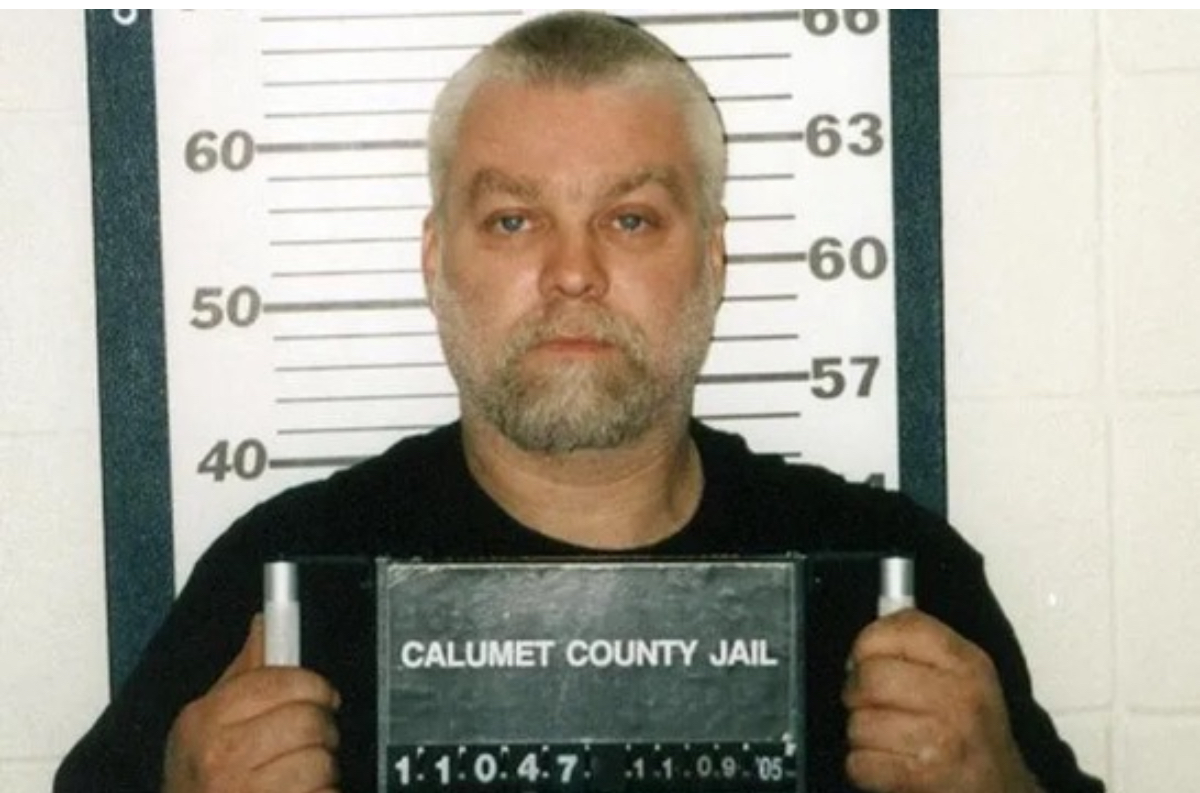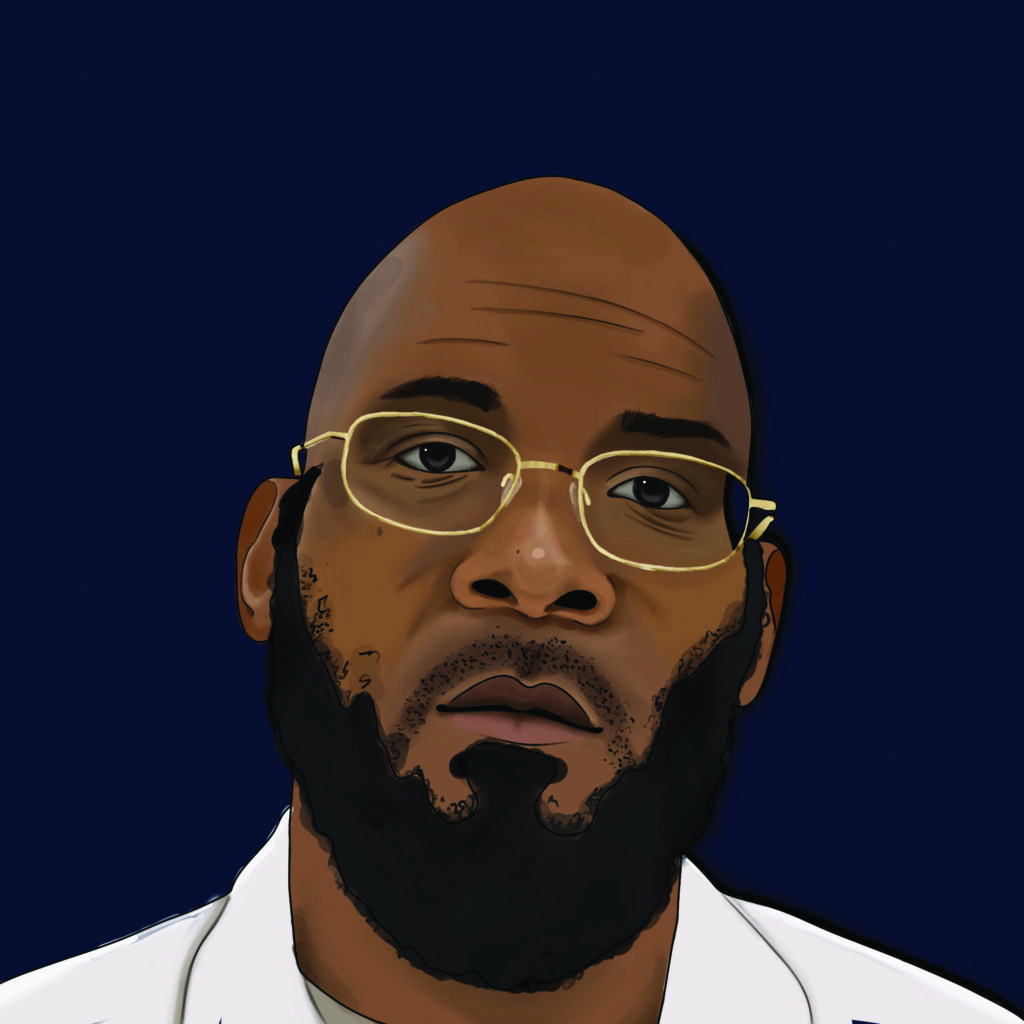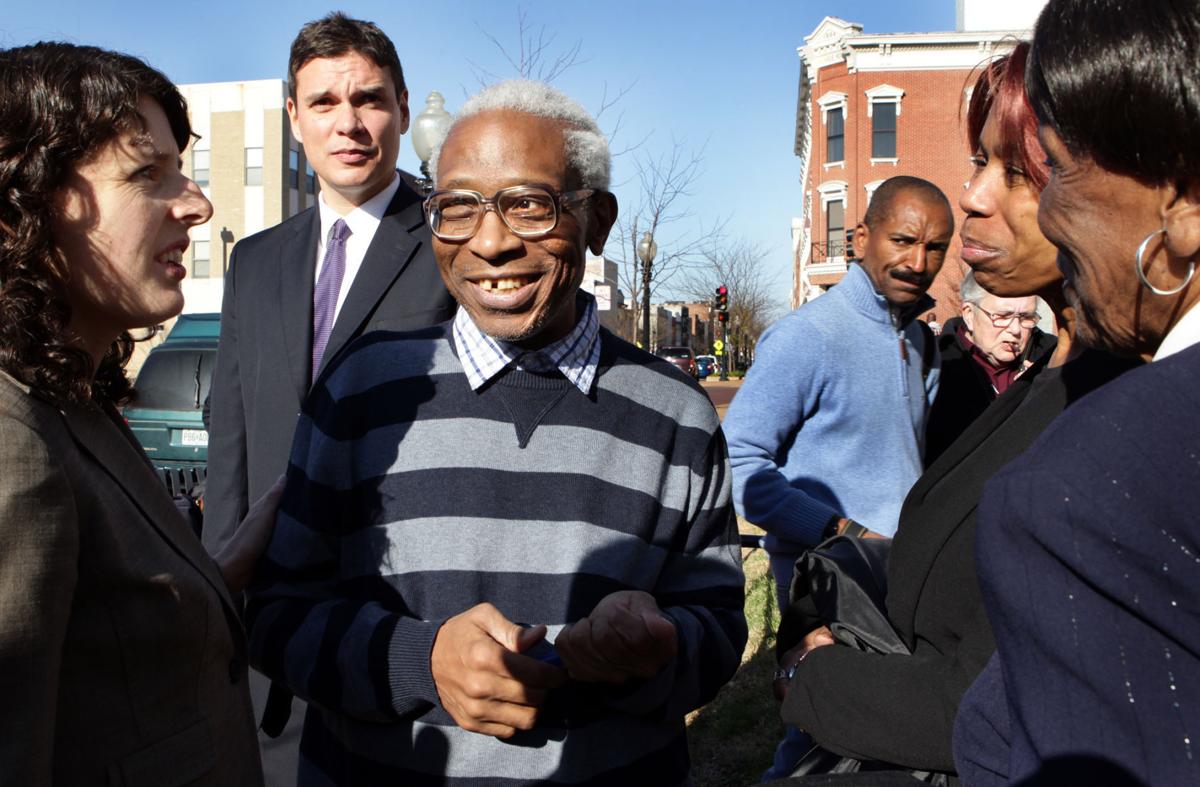Episode Transcript
[00:00:00] Speaker A: Foreign.
[00:00:12] Speaker B: Hey what's up everyone? My name is John Mark Miller and I am a 9th grade student at Benjamin Franklin School of Finance and it also known as BFit at Campus Magnet.
You are listening to a special podcast series created by Oraclass. Each episode tells the true story of someone who was wrongfully convicted, sent to prison for a crime they did not commit.
We have been learning about how the justice system works and sometimes how it doesn't.
These stories are deep, real and honestly kind of hard to believe, but that's why we are telling them.
In this episode I am going to walk you through the story of Antoine McCrae. You will hear what their life was like before the case, what happened when they got arrested and how the system failed them and what we can learn from it today. Let's get into it.
Let's start at the beginning before the news headlines and courtroom Antron McCray was a kid, but who was he really and what was his life and like before everything changed? Anton McCrae is a 51 year old African American male from Harlem, New York. He had a promising future before his arrest as a teenager. So here's some info on Antron McCray early life before his arrest, Antron McCrae was a 15 year old teenager born and raised in Harlem, New York City.
The son of Bobby and Linda McCrae, he wanted to become a basketball player. After high school, he was navigating adolescence, spending time with friends and families and living an ordinary life. However, his life changed dramatically and lost the privilege of innocence when he had become one of the five black and Latino teenager falsely accused of assault and rape in the Central park five case.
[00:02:53] Speaker C: Antron Macra faced many challenges growing up.
There are main attributes that Anton mainly faced and it was underprivilege and discrimination. When Anton was born in 1974, Anton lived through a life of privilege, poverty and he lived around crime in New York City.
Entrance saw lots of deaths moving black tins among black T and men and Anton thought police brutally was normal. Anton Macri was always a good kid and never got into trouble. My research at just 15 years old, Anton Macri was thirst into a nightmare when he was falsely accused in infamous Central park five case. Before his wrongful incarceration, he was simply a teenager trying to navigate the complexities of youth, balancing school, family, friendships and his own hopes for the future. Like many young people, he likely dreamed of a life filled with opportunity, personal growth and the chance to carve out his own path free from hardship and injustice.
Instead of a life filled with the typical Milestones of Adelson's graduation, career aspirations and personal achievements. His reality became one of survival wisdom that had failed him.
[00:04:17] Speaker B: One night in April 1989 changed everything.
A crime shook the city and suddenly Anton was in handcuffs. But what exactly happened and how did it get pulled into something so serious?
In the case of Antoine McCrae in the Central 5 on April 19, 1989 in the Central Park New York City a lady was running near the Northwoods where she was attacked and raped and left unconscious with a fractured skull. After the police questioned her, the arrest of five men was made and they were charged. They got five to 10 years.
A couple of years later, DNA evidence proved that the men was innocent and DNA evidence also proves the actual person who did it Turns out he was a loner.
On December 19, 2002 the New York Supreme Court gave justice to the five men who who were serving for a crime they did not do.
[00:05:32] Speaker D: The police first suspected Antron McCray after other boys who were arrested for causing trouble in Central park mentioned his name. On the same night a woman was attacked and a group of teens had been harassing people in the park.
When police caught some of them, they started questioning them about the jogger. A few of the boys under pressure said McCray was involved even though there was no real evidence against the that's what made the police bring him in.
When McCray was taken to the station he was questioned for hours without a lawyer. He was tired, scared and pressured by the officers. Eventually he gave a confession that wasn't true. He said things that didn't even match the facts of the crime like what the jogger was wearing or where it happened. Still, the police used that as a suspect because of what others said and how the police pushed him into confessing.
[00:06:42] Speaker E: The Central park daughter case had both eyewitnesses to the assault itself. The initial conviction were based on the confection of that were that were let later retracted. Retracted. The police got the confession but the forced confession no witnesses to the attack itself the crime. The crime occurred in the park that that night but but they weren't related to the to the attack on Trisha Melee.
The Central park jogging case involved the the brutal assault and the rape of the Teresa Melaye a 28 year old investment banker in in New York City Central park on April 29, 1989 at night in in. In the park.
When Anton McCrae's case first became public, the media reacted harshly.
The newspaper editor labeled the young men as a wolf pack branding them a as violent criminals The TV news forced the anger and fear surrounding the case, making it appear more significant than it is actually was.
Mainly, people were outraged and demanded justice. But the media coverage was unfair in one side. The boys were seen as guilty even before the trial started.
During the time New York City was dealing with high crime rates, the media spoiled people's fear, using the cause in cause to suggest the city was out of control. The way that the media covered the case made it really hard for the boys to get a fair trial. Everyone, everyone seemed to believe they were guilty before the trial even started.
News reports played on people's fear and anger, making the situation even bigger than it was.
Since the crime was already a big problem in New York City at the time. Thus, the case was used to use as proof that the city was dangerous and out of control.
Even after the boys were convicted, some people wonder if the case had been handled fairly. Showing how much the media can shape what people think.
[00:09:05] Speaker B: Once Antoine was arrested, things move fast. The trial was begun and this and the odds were stacked against him. But it was really justice or just a rush to judgment.
[00:09:23] Speaker A: Antrom McCrae, one of the Central Park Five, was represented by Mickey Joseph during the infamous trial in 1990. Joseph was a criminal defense lawyer at the Legal Aid Society and was known for delivering compelling arguments. He empathized the lack of physical, testimonial or DNA evidence linking McCrae and the other defendants to the crime scene. Despite his efforts, McCrae and others were convicted largely due to gross confessions and public pressure surrounding the case. The effectiveness of Joseph defense was limited by the overwhelming challenges posed by in the case of the defense team face criticism for their approach, including not presenting alternative theories for the crime. The prosecution's narrative combined with societal thesis and media frenzy overshadowed the defense's argument. While Joseph highlighted critical flaws in the evidence. The jury ultimately sided with the persecution leading to wrongful convictions. The case remains a stark reminder of the systemic issues within the justice system.
Anton McCray was one of the five teenagers known as the Central Park Five. Wrongly convinced for the brutal assault and rape of a woman in New York City, Central park in 1989. He was just 15 years old at the time.
Climate or fear and racial bias played a big role.
The police were under pressure to solve the crime quickly and the media fueled public outrage. This led to a rush in judgment and a focus on these young black and Latino boys. A white female jogger was brutally attacked and raped in Central Park. The crime shocked the city and sparked intense media coverage and the public demand for justice. The Prosecution's case rested heavily on the confession of the five boys, including intramcray. These confessions were later to be inconsistent with the evidence and likely to roast.
There was no DNA evidence linking any of the boys to the crime. Anshaw McCrae and the other boys were tried separately.
Despite the lack of physical evidence. They were convicted based on their confessions.
Many people believe they were guilty because of the intense media coverage in 2002. A conviction a convicted serial rapist and murder Matthias Reyes confessed to the crime. His DNA matched the DNA found on the victim. The new evident this new evidence led to the exernation of Antromocray and the other four men.
[00:12:20] Speaker E: The trial was unfair because two two main reasons are falsely confession and mistake and mistakes during the investigation. But even when the victim tried to describe what the rapist looked like and they said they said they would, they had fresh dishes on their chin and the investigators tried to lick it. But to Antron. But didn't make any sense since there were five witnesses that saw something different than what the first witness saw. Jurors and judge found him guilty even though the lack of evidence.
[00:12:57] Speaker B: Anton McCray, just 15 at the time, had no solid alibi presented in the court. But his supposed confession was the cornerstone of the prosecution case.
What the jury never grasped was that his statement, like the others, was coerced. After hours of intense misleading the police interrogation.
[00:13:25] Speaker A: When the Anshama Kirk case was first became public, media reacted harshly. Newspapers everywhere labeled the young men as wolf pack, branding them as violent criminals. TV news focused on the anger and fear surrounding the case, making it appear even more significant than it meant. Actually, many people were outraged and demanding justice since the crime was already a big problem in New York City at the time. The case was used as proof that the city was dangerous and out of control. Even after the boys were convicted, some people wondered if the case had been handled fairly, showing how much the media can shape what people think.
[00:14:07] Speaker B: Looking back, there was so many red flags, so many chances to stop this from happening. But the truth got buried under fear, bias and bad decisions. Let's break down what really went wrong.
[00:14:28] Speaker F: Antron was just 15 years old when the police questioned him for hours without a lawyer or his parents.
They pressured him into giving a false confession. No breaks, no food, just manipulation. That's not justice. That's abuse. The DNA found at this scene didn't match Antron or any of the other boys.
Still, the prosecution pushed forward like it didn't matter. They let a confession forced by pressure outweigh real science.
Years later, A man named Matias Reyes came forward and said he did it.
And guess what? His DNA matched. That should have been a wake up call. But by then, Antron had already spent years locked up for something he didn't do. The boys were all black or Latino from working class neighborhoods. The media called them Wolf Pack. They weren't treated like kids. They were treated like criminals. Before the trial Even began in 2002, the truth came out. Antron and the others were cleared of all charges. But the damage already done, he lost years of his life and trust in the system.
So what went wrong?
Almost everything.
From the moment he walked into that station, the system failed him.
[00:15:50] Speaker B: Antron's story didn't end with the trial. After years being behind bars, he had figured out how to live again. But what can he learn from everything he went through? And how do we make sure it doesn't happen to someone else?
If this ever happens to me, I think I would feel completely shattered. The injustice would weigh heavily on me. Knowing I was screaming the truth but no one was listening. Betrayal would hit hurt. Especially from the very system that's supposed to protect people.
Maybe somewhere deep inside I would find hope to fight back. To prove my innocence and reclaim my life. The thought alone feels overwhelming. But it reminds me why justice matters so much.
[00:16:55] Speaker G: Think to yourself for a few minutes about what lessons we could all learn from this case where people been wrongly convicted. How can our society keep letting this happen? Intron McCray was one of the many guys that have been wrongly convicted for something he didn't do. This is not the justice system we are counting on. The biggest lesson our society could learn from this event is not to be quick to judge a person by the way they look. Over 53% black men have been wrongly convicted because of their looks or sometimes because of their background.
There have been a lot of mistakes made in our society. And what happened to intron McRae was mostly common for black men.
This is a big lesson our society has to learn. When will these mistakes stop happening?
[00:17:45] Speaker B: These mistakes make us question, does the system truly treat all individuals equally, regardless of their background, socioeconomic status or race? The evidence of systemic disparities is overwhelming.
What about the alarming number of people incarcerated for crimes they did not commit? Will this heartbreaking pattern of wrongful convictions ever be eliminated? These are pivotal questions about the fairness and the impartiality of our justice system. Because when justice falters, when innocent lives are upended, it's not just a mistake. It is a betrayal of the very principles the system is supposed to uphold.
Justice should not remain stagnant. It must involve alongside society.
It needs to adapt to our ever growing understanding of fairness and human rights. This includes addressing racial discrepancies, eliminating base, and ensuring that accountability extends to those who administer justice itself. This conversion isn't just automatic, it's about real lives, real families, and the integrity of the law that binds us together.
Join us as we question the flaws and explore potential reforms and consider how we can build a justice system that truly worthy of the name Ansha McCrae's.
[00:19:50] Speaker H: Journey has been marked by resilience in the face of injustice. Having endured wrongful conviction and years of hardship, he has shown tremendous strength in reclaiming his life and narrative.
If you were to offer him advice, you might encourage him to continue using his voice to advocate for change and inspire others who have faced similar injustices.
By sharing his story and supporting reforms that address flaws in the justice system, he can contribute to preventing future wrongful convictions.
His live experience makes him a powerful force for awareness and embracing that role could bring full personal growth and society impact. Beyond advocacy, you might also advise him to focus on his personal healing and fulfillment.
Ensuring that he surrounds himself with with love, whether through family, close friends or supportive community, can provide continuous strength. Encouraging him to prioritize joy, personal goals and inner peace is essential as he deserves to thrive beyond the confines of his past struggles.
He has already demonstrated the ability to rise above innocence, adversity, and reminding himself that his future is to shape free from the injustices of his past might be a meaningful perspective to share.
[00:21:53] Speaker B: To prevent future wrongful convictions, laws can be changed. More question can be asked to properly go through the process of any conviction.
Anton McCrae's story is one of pain, survival and truth. It shows how broken the system can be and why speaking up matters. This isn't just history, this is a warning and a call to do better.
Thanks for listening. This episode of our Wrongful Conviction podcast series from Be Fit at Campus Magnet. These stories aren't just about the past, they connect things to the still happening today.
That's why it's important for students like us to speak up, ask questions, and really understand how justice should work.
If you found this episode powerful, share it, talk about it, and remember, one voice can change a lot. I am John Mark Miller and this has been my episode Peace.


